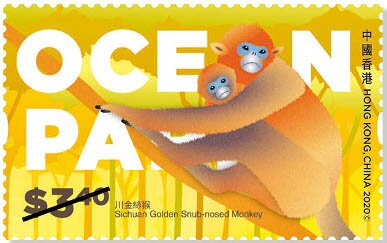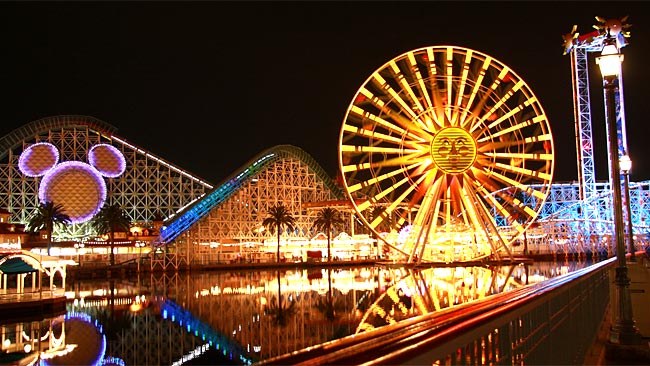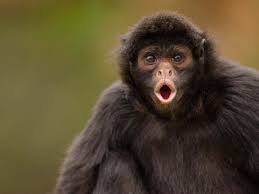Stamp: Sichuan Golden Snub-nosed Monkey (Hong Kong 2020)
Sichuan Golden Snub-nosed Monkey (Hong Kong 2020)
18 August (Hong Kong ) within release Ocean Park Theme Park (2020) goes into circulation Stamp Sichuan Golden Snub-nosed Monkey face value 3.40 Hong Kong dollar
| Stamp Sichuan Golden Snub-nosed Monkey in catalogues | |
|---|---|
| Colnect codes: | Col: HK 2020-07C |
Stamp is horizontal format.
Also in the issue Ocean Park Theme Park (2020):
- Stamp - Indo-Pacific Bottlenose Dolphin face value 2;
- Stamp - Toco Toucan face value 2.60;
- Stamp - Sichuan Golden Snub-nosed Monkey face value 3.40;
- Stamp - Meerkats face value 3.70;
- Stamp - Giant Panda face value 4.90;
- Stamp - King Penguin face value 5;
- Souvenir Sheet - Map of Ocean Park Theme Park face value 10;
- Stamp - Map of Ocean Park Theme Park face value 10;
Stamp Sichuan Golden Snub-nosed Monkey it reflects the thematic directions:
An amusement park is a park that features various attractions, such as rides and games, as well as other events for entertainment purposes. A theme park is a type of amusement park that bases its structures and attractions around a central theme, often featuring multiple areas with different themes. Unlike temporary and mobile funfairs and carnivals, amusement parks are stationary and built for long-lasting operation. They are more elaborate than city parks and playgrounds, usually providing attractions that cater to a variety of age groups. While amusement parks often contain themed areas, theme parks place a heavier focus with more intricately-designed themes that revolve around a particular subject or group of subjects.
Animals are multicellular, eukaryotic organisms of the kingdom Animalia (also called Metazoa). All animals are motile, meaning they can move spontaneously and independently, at some point in their lives. Their body plan eventually becomes fixed as they develop, although some undergo a process of metamorphosis later on in their lives. All animals are heterotrophs: they must ingest other organisms or their products for sustenance.
Mammals are any vertebrates within the class Mammalia (/məˈmeɪli.ə/ from Latin mamma "breast"), a clade of endothermic amniotes distinguished from reptiles (including birds) by the possession of a neocortex (a region of the brain), hair, three middle ear bones and mammary glands. All female mammals nurse their young with milk, secreted from the mammary glands. Mammals include the largest animals on the planet, the great whales. The basic body type is a terrestrial quadruped, but some mammals are adapted for life at sea, in the air, in trees, underground or on two legs. The largest group of mammals, the placentals, have a placenta, which enables the feeding of the fetus during gestation. Mammals range in size from the 30–40 mm (1.2–1.6 in) bumblebee bat to the 30-meter (98 ft) blue whale. With the exception of the five species of monotreme (egg-laying mammals), all modern mammals give birth to live young. Most mammals, including the six most species-rich orders, belong to the placental group. The largest orders are the rodents, bats and Soricomorpha (shrews and allies). The next three biggest orders, depending on the biological classification scheme used, are the Primates (apes and monkeys), the Cetartiodactyla (whales and even-toed ungulates), and the Carnivora (cats, dogs, seals, and allies).
Monkey is a common name that may refer to most mammals of the infraorder Simiiformes, also known as simians. Traditionally, all animals in the group now known as simians are counted as monkeys except the apes. Thus monkeys, in that sense, constitute an incomplete paraphyletic grouping; however, in the broader sense based on cladistics, apes (Hominoidea) are also included, making the terms monkeys and simians synonyms in regard to their scope.




